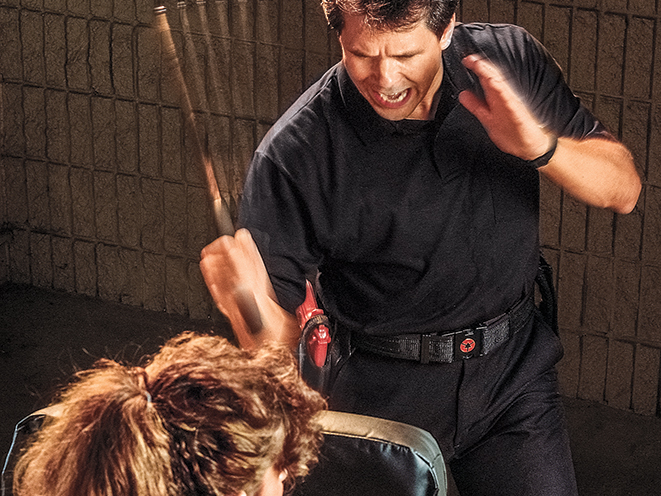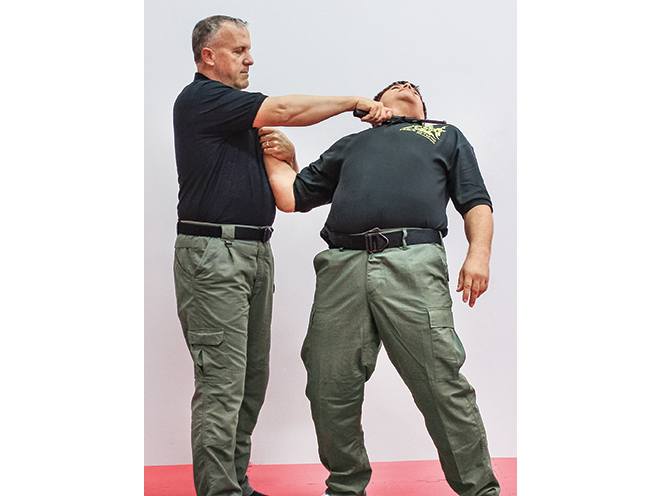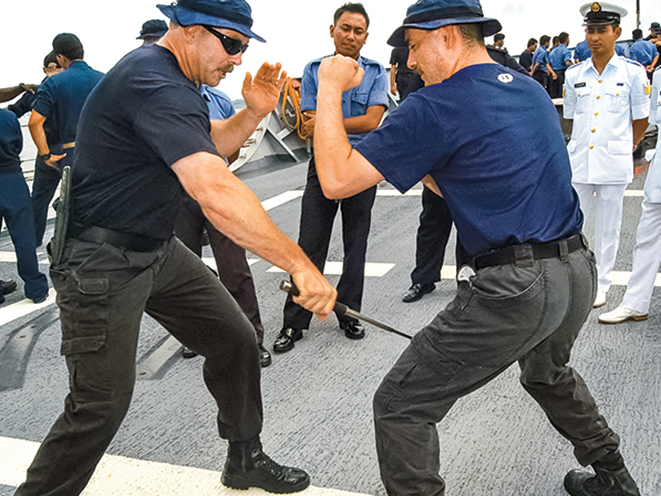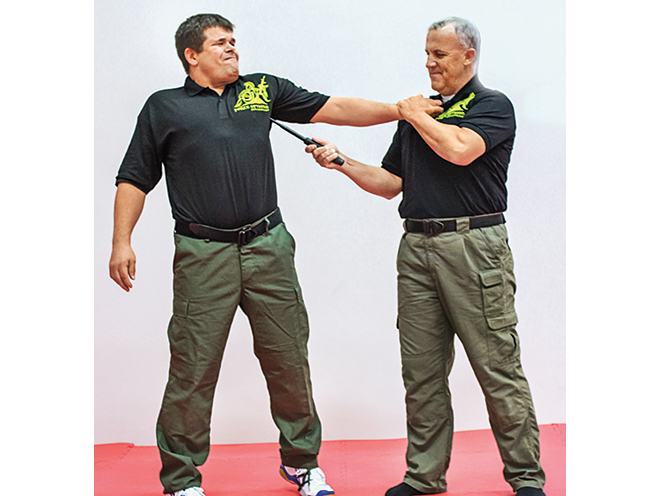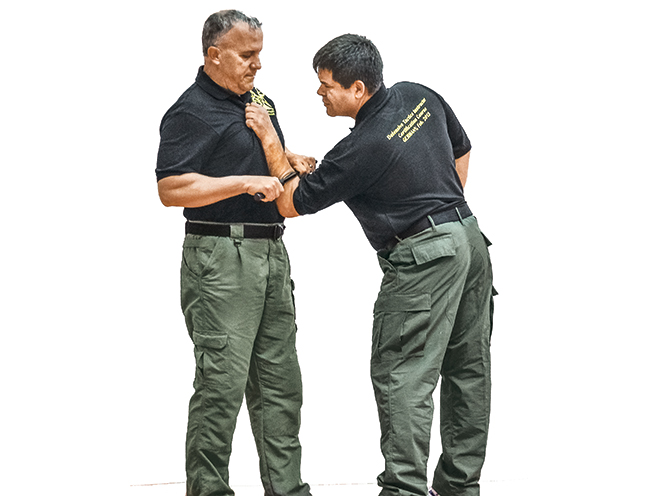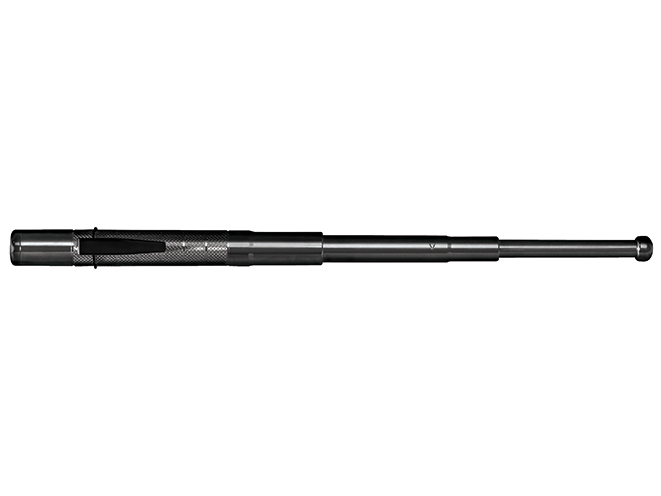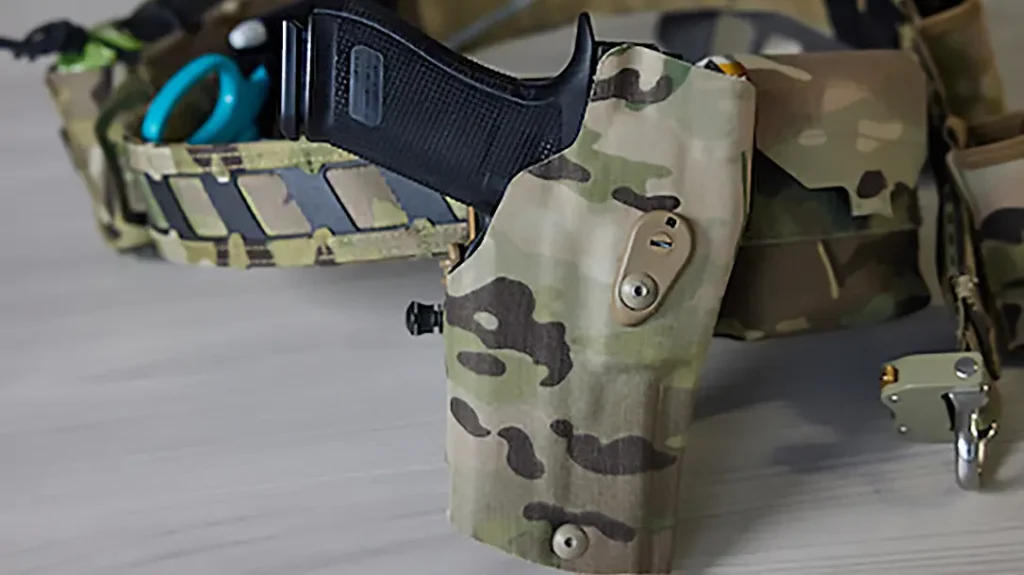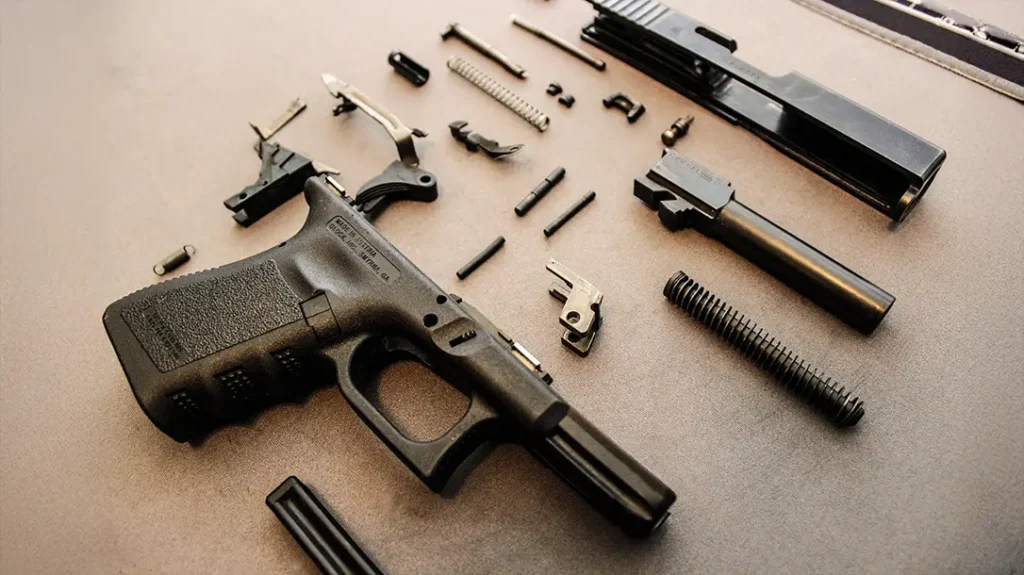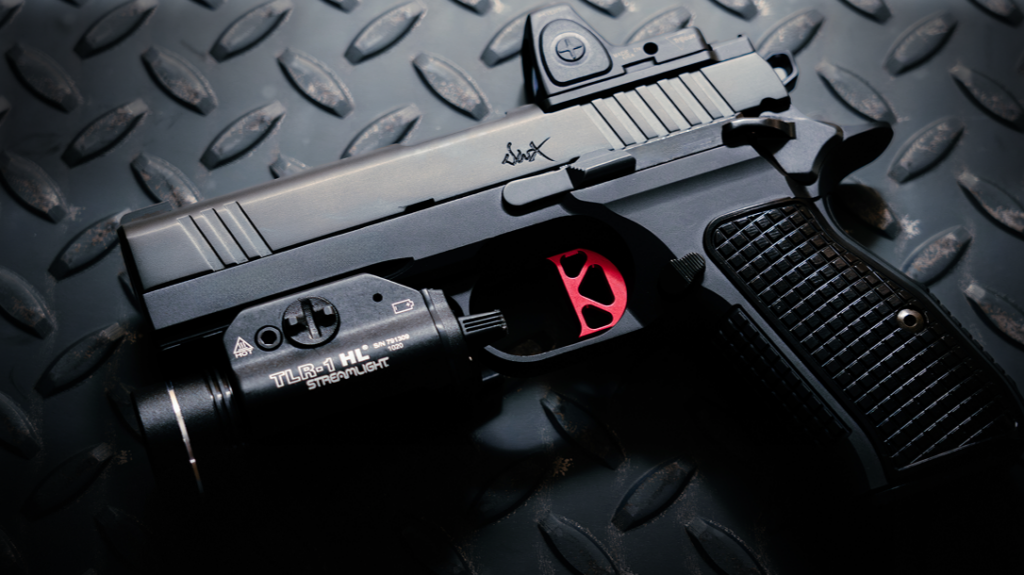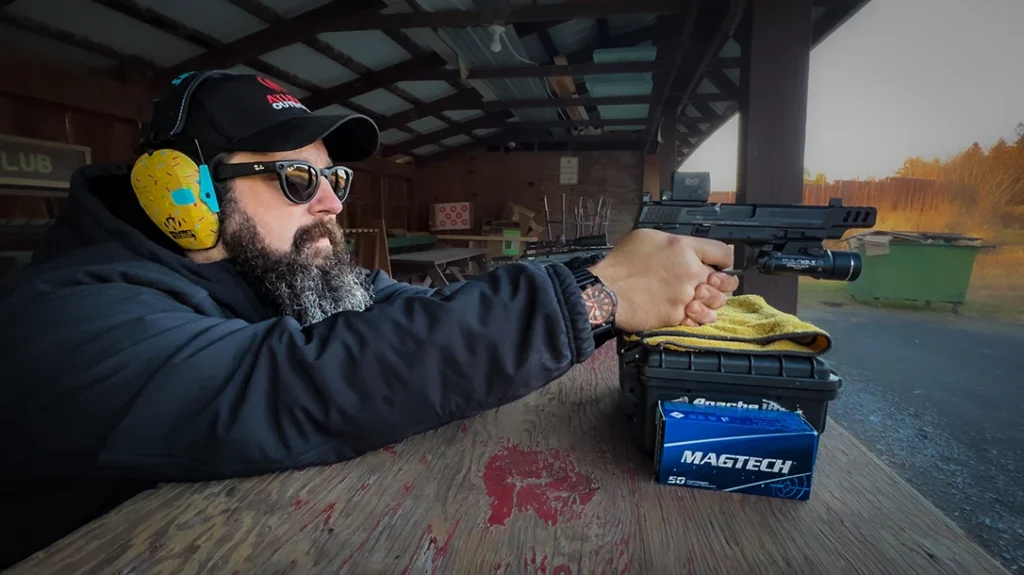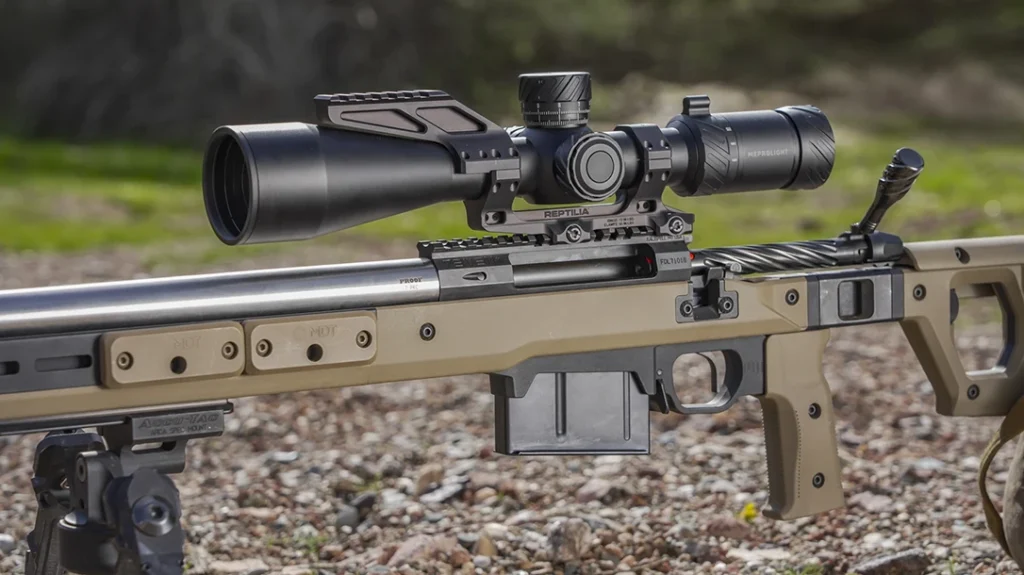Law enforcement officers have long experienced the benefits of carrying a baton while on duty, and civilians should take note of this tool’s effectiveness at controlling an attacker. Ranging from simple hickory clubs and side-handle batons to modern expandable batons, these tools are an essential item in an officer’s kit. As the tools have developed, so have the techniques that go with them. Once seen as simply a striking tool, the baton has evolved into an exceptionally effective control weapon as well.
The current gold standard for batons in law enforcement is the expandable baton. This baton is generally built with a cylindrical outer tube that contains telescoping inner shafts. As the baton is extended, these internal cylinders lock into each other with friction. The composition of the baton ranges from aluminum alloy to steel. The tip of the baton is generally solid and acts as a “power point” when used as a striking tool.
The baton is opened by swinging it down in a forceful manner. The internal sections will slide out and the baton will lock out with the inertia generated. Depending on the holster or scabbard design, it is possible to carry an expandable baton in either the collapsed or expanded position, which would be helpful if an armed citizen needed to holster an expanded baton and it was not possible or convenient to collapse it at the time. Collapsing it is accomplished by simply driving the tip of the baton straight down into the ground, which forces the internal cylinders to slide back inside each other.
Advertisement — Continue Reading Below

There are many manufacturers of expandable batons, but one of the first and most well known is ASP. In fact, most expandable batons are generally called “ASPs” regardless of the maker. The time it takes from grabbing the baton to complete extension can be less than two seconds in most cases, and even faster in some.
Taking Control

In general terms, the baton is classified as an impact weapon. Its initial design was set around the need to strike an adversary. Using the correct technique and targeting, a baton strike has the capacity to incapacitate even large subjects. While it can do a sufficient job at this, it is equally effective in three other categories: pushing, pulling and pinning. All three of these additional uses can be performed even when the baton is in its collapsed state. Let’s look at some variations.
Advertisement — Continue Reading Below
The ends of the baton are usually a very hard material, such as steel or aluminum. When this is pressed firmly into specific targets on a subject, they react by moving away to escape the pain. This technique is very effective in cases where police officers just need to move people along and clear them away. Two of the best targets for this technique are the sternum and the bladder area. The discomfort caused can be intense and people rarely stay around for more.
RELATED STORY: Massad Ayoob – How To Escape A Rear Choke
For the sternum, the end of the baton is placed directly in the center of the chest and the baton holder applies direct pressure into their attacker, driving them back. For the bladder area, an extended baton tends to work slightly better. To accomplish this technique, extend the baton and push the tip onto the belt line of the subject. Now, in the same motion, angle the tip down 45 degrees and drive the baton down into the abdomen of the attacker. The response from this technique is fast and profound. While it is indeed painful, it is equally as effective because of the unique area being attacked.
Advertisement — Continue Reading Below
One last application of this technique is great for escorting people or even getting them to exit their vehicles when they would rather not. Extend the baton and place the hard tip directly into the deepest part of the subject’s armpit. With your other hand, grab the wrist of that same arm and drive the baton up, thereby pulling their hand down. This is as painful as it is startling. Few bad guys start the day thinking they will soon have a baton shoved into their armpit.
Attacker Takedowns

A pulling technique is used when you need to trap an attacker’s arm in order to control them and ultimately take control of them. This is typically easily accomplished since the subject is grabbing you already. To do this, access your baton and, using both hands, drive it down the subject’s forearm towards their elbow. All the while, you are pulling the baton and the subject’s arm into their center. The end result is a painful technique that pins the assailant’s arm to your mid line, allowing you to take them to the ground.
Advertisement — Continue Reading Below
RELATED STORY: Armed & Ready – Using Improvised Weapons For Self Defense
Another pulling technique you should know involves the head. If an assailant is being aggressive, you can move either behind or beside the subject and place the baton against the side of their head. Using the same pulling motion we used in our previous technique, the baton’s hard surface will cause pain as it presses against the soft tissue on the head. You can then lead the subject to the ground or, once again, to their center.
Pinning with a baton focuses on the use of pressure points and/or nerve-centric areas of the body. These techniques will always be performed with an opposing surface to support it. For example, pinning a hand while pressing it into your chest. In fact, this is one of the best examples of the pinning techniques. As a subject grabs you, index the baton’s hard end directly into the back of the attacker’s hand. You then drive the hard baton surface into their hand as it’s pressed against the chest. The soft, nerve-rich back of the hand is a solid choice for this type of technique.
Advertisement — Continue Reading Below
Pressure Points

The use of pressure points in law enforcement has been around for decades. It is based on Japanese principles of kyusho. The use of a baton in stimulating or targeting these pressure points has proven to be very effective. A deep, penetrating press with the end of a baton into a kyusho point, or pressure point, enhances the effect you are looking to achieve in defending yourself.
RELATED STORY: Hard Target – Home Invasion Security Upgrades
Advertisement — Continue Reading Below
As with any tool carried for self-defense, the baton requires serious training in order to be wielded effectively. While most trainers still cling to a standard curriculum of just teaching striking, many are expanding their curriculums to include advanced uses of this great weapon. The baton is a very utilitarian and multi-faceted tool capable of providing you with a wide variety of defense options. No longer is it simply relegated to being used for striking. The baton has truly grown up in design and in its uses.
